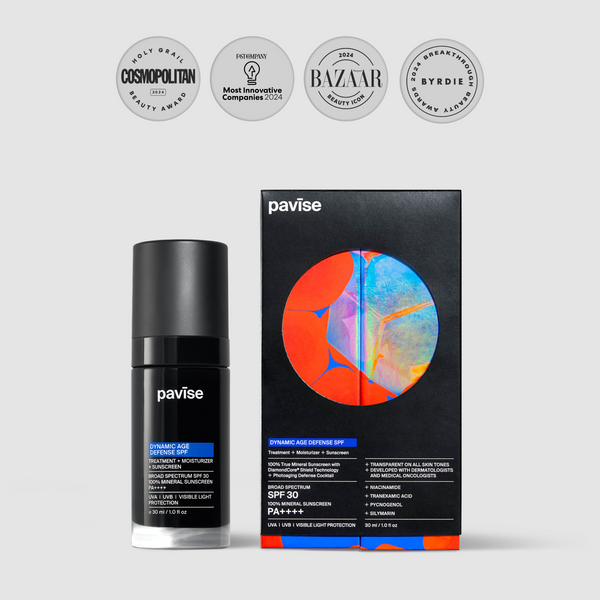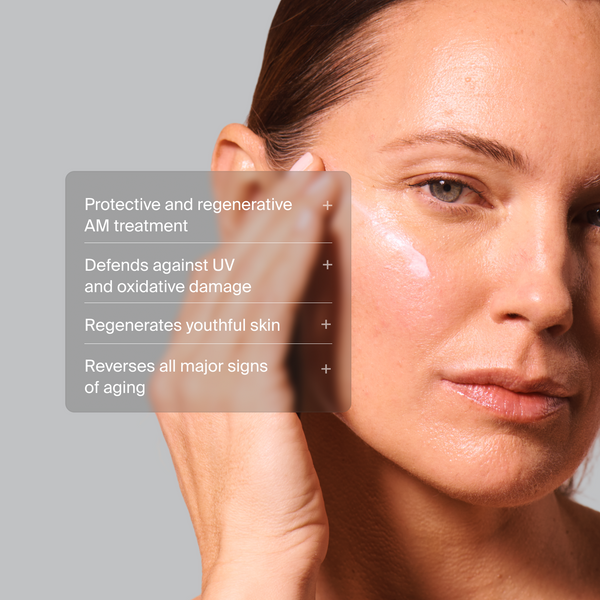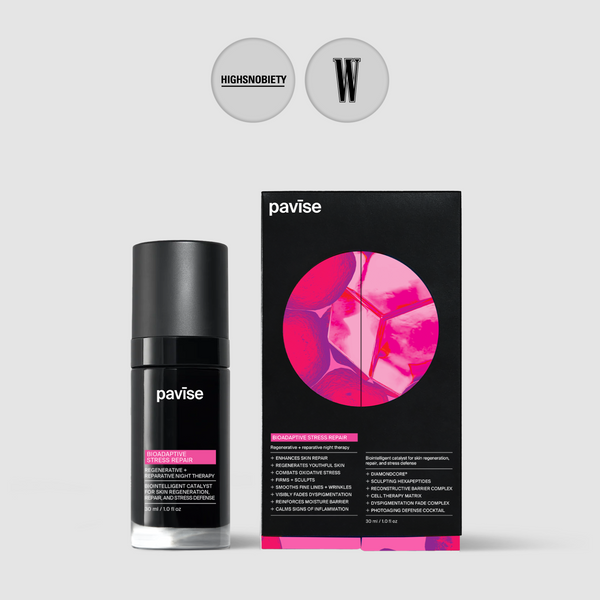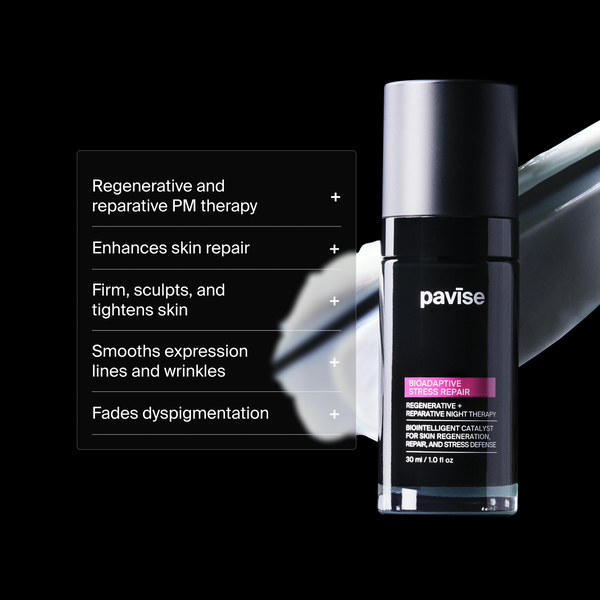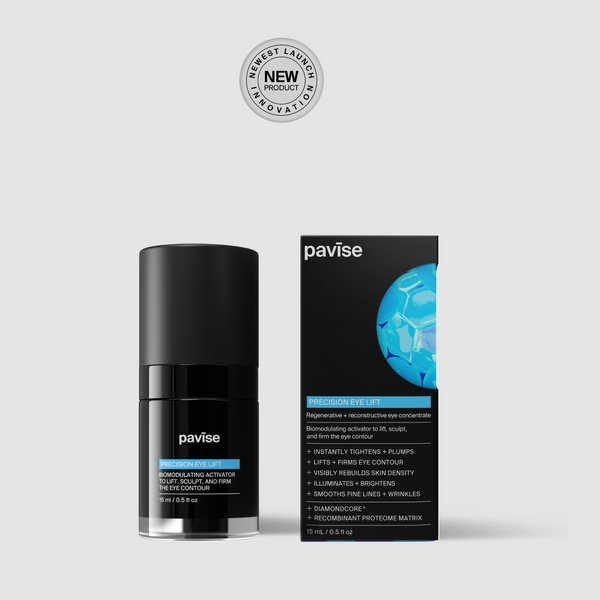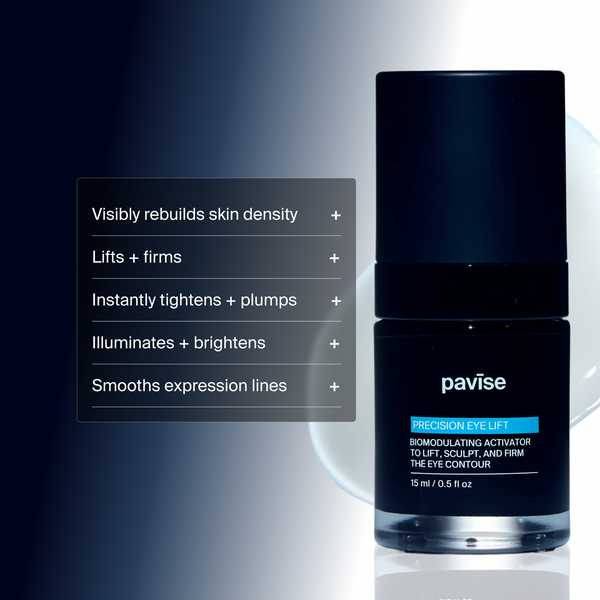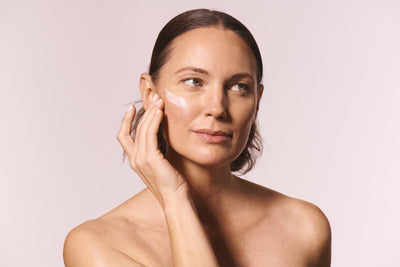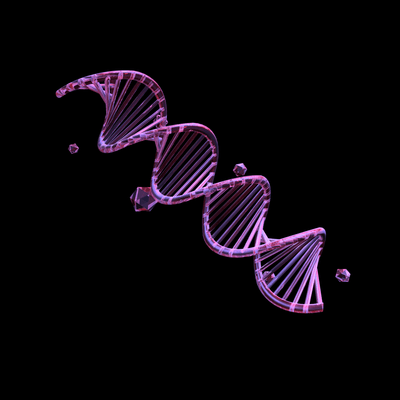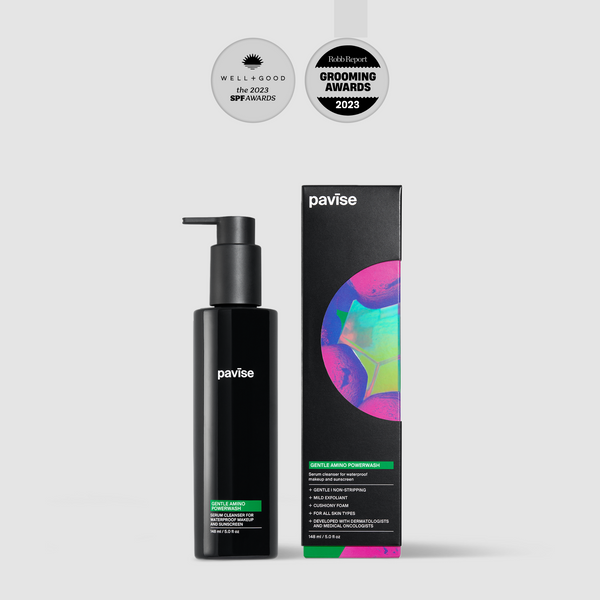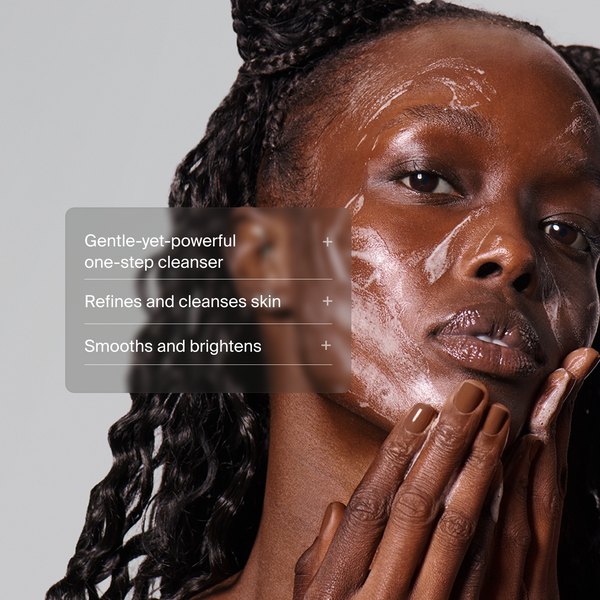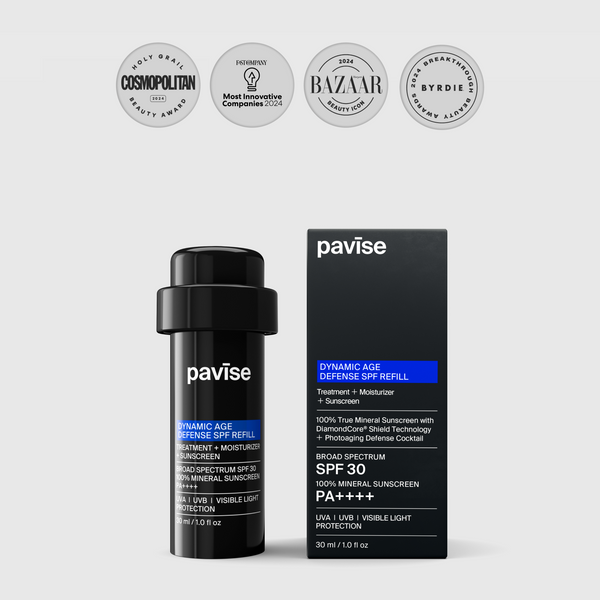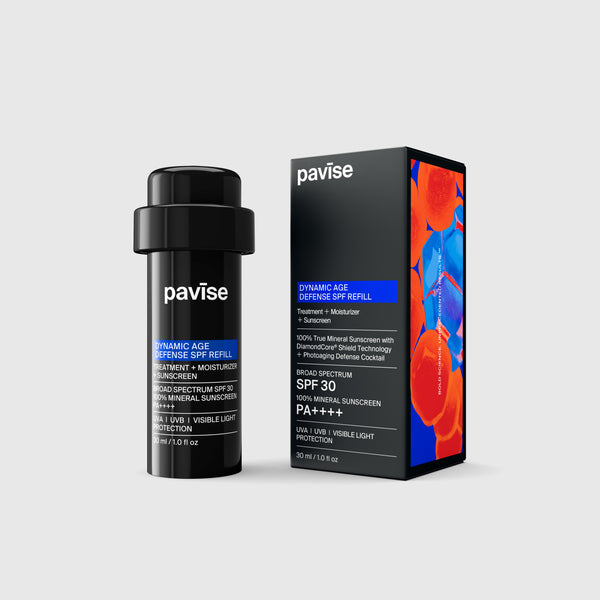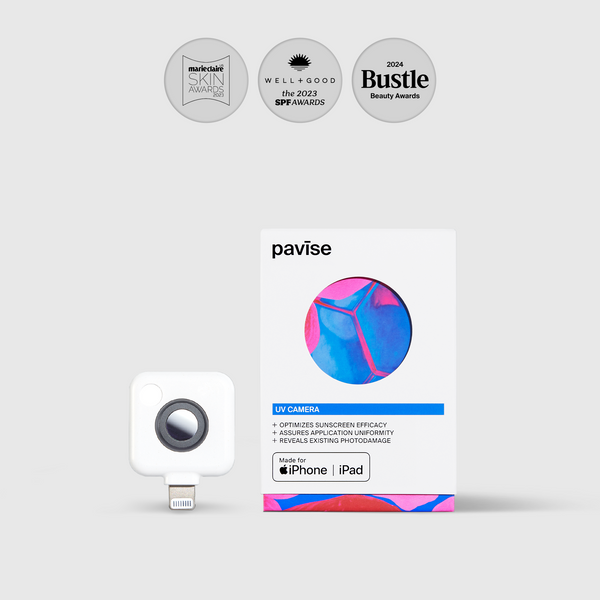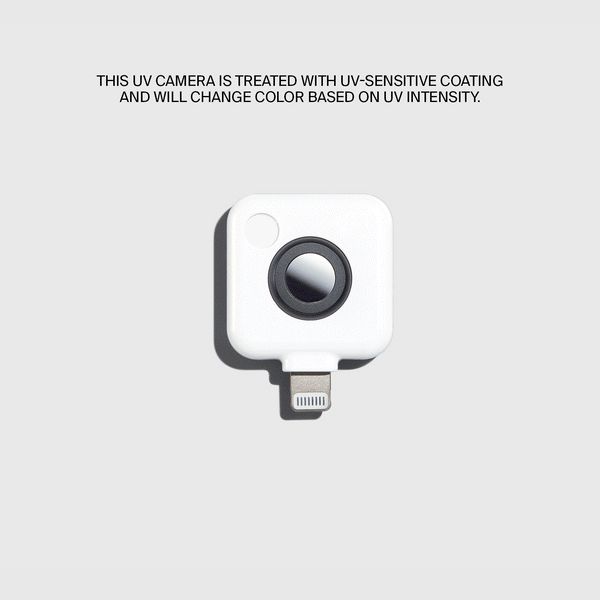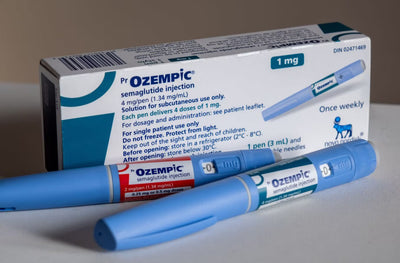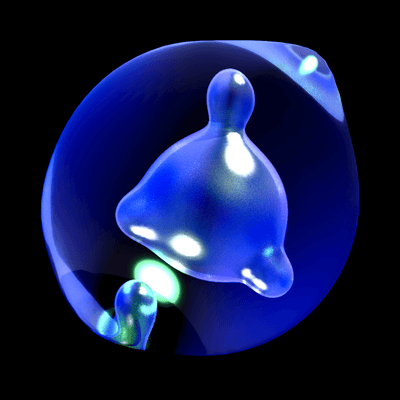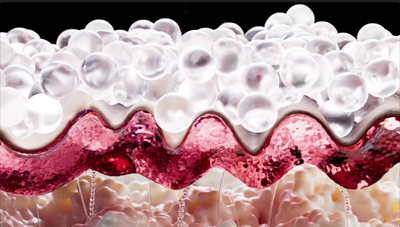WHY NIGHTTIME IS PRIME TIME FOR SKINCARE
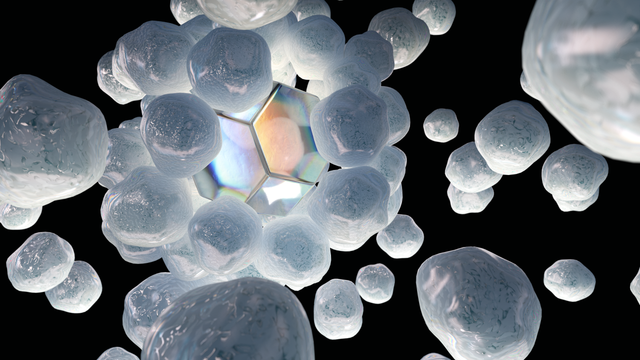
What you need to know
Nighttime is the skin’s most effective repair window, driven by the body’s circadian rhythm. As we rest, the skin shifts into a regenerative state marked by increased cell turnover, melatonin production, blood flow, and permeability.
These biological changes boost the absorption of topical treatments and help repair damage from UV exposure and oxidative stress. Advanced formulas like Pavise Bioadaptive Stress Repair align with these natural rhythms, supporting antioxidant activity, DNA repair, and barrier recovery.
By syncing skincare with the body’s internal clock, nighttime becomes a powerful opportunity for visible renewal and long-term skin health.
With the uptake in trending skincare in recent years, everyone has been developing and perfecting their own personal skincare routines. While scrolling through social media, you might have noticed that no routine is the same, and some people even vary their routine depending on the morning and evening. Why is that? Well, most people have caught on that there are different products used at different times of day because your skin changes throughout the day. More specifically, there is a natural cycle called the circadian rhythm that your body goes through that affects cell behavior. Our skin plays a major role in this cycle, and we are here to tell you how it behaves, and how we can use this natural clock to our advantage in skin healing.
What is the circadian rhythm?
The circadian rhythm is the natural 24-hour clock that determines the sleep-wake cycle our bodies experience throughout the day. It is both controlled by out cellular cycles, as well as external stimuli, specifically the dark/light cycle determined by the earth5. It controls when we sleep, when we wake up, and regulates the natural bodily functions that run in the background of our day-to-day lives. Our skin experiences this cycle with the upregulation and downregulation of different processes to promote healing or protection during different times of day.
How does the circadian rhythm affect skin?
With the circadian rhythm being organized to encapsulate a 24-hour period, it makes sense that the natural time for the most skin healing to occur is at night. This is the time when our bodies are resting and able to refocus out energy towards regeneration and healing, with skin regeneration being almost 3x faster at night than during the day7. Some other functions in the skin regulated by this internal clock are transepidermal water loss (TEWL), cell proliferation, temperature, blood flow, and hormone levels1,2. All of these functions change their expression at night due to this daily cycle.
What changes promote skin healing?
Throughout the evening, many of the processes listed above have a positive impact on the skin, allowing it to heal overnight. Part of the skin healing process involves repairing damaged cells or DNA that was harmed during the day1. This could be either damage that occurred naturally, or damage due to photoaging from UV exposure. UV damage is particularly harmful because is causes the overexpression of reactive oxygen species (ROS) and other free radicals that hinder cellular function. To combat this, the body's natural clock developed a way to promote healing.
One of the hormones that are upregulated during sleep is melatonin. Melatonin levels are triggered by light, so when it gets dark in the evening, the body knows to increase the amount of melatonin in our system3. In terms of overnight skin regeneration, melatonin has been found to be involved in healing UV-damaged skin cells and wound healing3. Its antioxidative properties allow it to be an effective free radical scavenger which reduces photoaging effects4. It is also involved in the pathways that produce other antioxidative enzymes that reverse the effects of photoaging4. By removing the free radicals that damage the cells, melatonin is able to prevent cellular apoptosis of skin cells, or cell destruction4. This allows for more cells to replicate, which improves the skin barrier, making it stronger and healthier.
Another change that occurs in the skin overnight is the level of transepidermal water loss (TEWL). In other words, the epidermis, the outermost layer of our skin, experiences a higher amount of water loss in the evening that in the morning1,2. The epidermis is responsible for protecting our body from external organisms as well as keeping water inside our body2. At night, the epidermal layer becomes more permeable due to circadian rhythm changes, which allows for more water loss to occur. While this change does sound harmful to out skin, it is something that we can easily use to our advantage. A more permeable epidermal layer allows for topical treatments to absorb into the skin more easily which makes treatments more effective. Additionally, increased blood flow diffuses treatments faster, effectively improving how much skin is reached and treated1.
Pavise Bioadaptive Stress Repair
How can we use this knowledge to better improve skin repair, and what is the best product to do so? The Pavise DiamondCore® technology is not only a protective tool against photoaging, but it is also reparative. The uniform structure of the molecule allows the zinc oxide to penetrate the skin further, reaching the inner layers of the skin to scavenge the free radicals that harm our skin cells and cause aging. Additionally, Nd-ZnO has powerful skin regenerative properties, showing enhanced cell migration and growth in comparison to natural processes6. By applying the product as night, more of the ROS scavengers can penetrate the skin due to the increased skin permeability and neutralize any damage that is occurring. Add in the upregulation of melatonin that is also scavenging free radicals, and there are multiple ongoing processes that are combatting damage, healing our DNA, and regenerating new cells.

Before vs After using BSR for 8 weeks
The Bioadaptive Stress Repair does not only contain ROS scavengers. There is also a reconstructive barrier complex that aids in the repair of our skin barrier. While we are using the increased skin permeability to our advantage, there is still the downside of the increased TEWL which dehydrates our skin. The increase in TEWL is due to the permeable epidermal barrier2. By using the Bioadaptive Stress Repair overnight, we are exploiting the natural permeability of the skin as well as reducing the amount of TEWL to promote hydration. Our skin already has a reparative process to improve the skin barrier as mentioned earlier due to the increase in melatonin levels. Adding an additional method to repair our skin barrier effectively reduces the amount of TEWL.
With Pavise Bioadaptive Stress Repair, your nighttime routine becomes a vital part of your skin’s recovery process. As your body winds down, our formula works in harmony with the skin’s circadian rhythm to deliver targeted support when it’s needed most. DiamondCore® technology helps neutralize daily environmental stressors and supports DNA repair, while our barrier complex helps prevent overnight moisture loss and reinforces skin strength.
The result? You wake up to skin that feels calm, restored, and visibly renewed. Because beauty sleep isn’t just a phrase; it’s a science-backed ritual, and we like to make the most of every hour.
References
1. Lyons AB, Moy L, Moy R, Tung R. Circadian Rhythm and the Skin: A Review of the Literature. The Journal of Clinical and Aesthetic Dermatology. 2019;12(9):42. Accessed July 9, 2025. https://pmc.ncbi.nlm.nih.gov/articles/PMC6777699/#B17
2. Yosipovitch G, Xiong GL, Haus E, Sackett-Lundeen L, Ashkenazi I, Maibach HI. Time-Dependent Variations of the Skin Barrier Function in Humans: Transepidermal Water Loss, Stratum Corneum Hydration, Skin Surface pH, and Skin Temperature. Journal of Investigative Dermatology. 1998;110(1):20-23. doi:https://doi.org/10.1046/j.1523-1747.1998.00069.x
3. Gupta MA, Gupta AK. Sleep-wake disorders and dermatology. Clinics in Dermatology. 2013;31(1):118-126. doi:https://doi.org/10.1016/j.clindermatol.2011.11.016
4. Konrad Kleszczyński, Hardkop LH, Fischer TW. Differential effects of melatonin as a broad range UV-damage preventive dermato-endocrine regulator. Dermato-endocrinology. 2011;3(1):27-31. doi:https://doi.org/10.4161/derm.3.1.14842
5. Galin M, Milot E, Martin T, et al. Corrigendum to “Does vestibular stimulation modify circadian rhythms and sleep? A systematic review” [Sleep Medicine 131 (2025)106520]. Sleep Medicine. 2025;133:106630. doi:https://doi.org/10.1016/j.sleep.2025.106630
6. Zhang XD, Teng C, Bai X, et al. Enhanced skin regeneration and therapeutic delivery using novel diamond‐augmented zinc oxide. Journal of Cosmetic Dermatology. Published online July 31, 2024. doi:https://doi.org/10.1111/jocd.16508
7. Su Z, Hu Q, Li X, Wang Z, Xie Y. The Influence of Circadian Rhythms on DNA Damage Repair in Skin Photoaging. International Journal of Molecular Sciences. 2024;25(20):10926-10926. doi:https://doi.org/10.3390/ijms252010926
By Elia Rodriguez - Updated September 24, 2025
